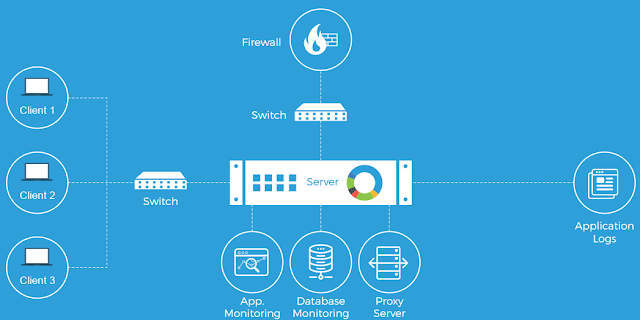How Log Analysis Improves Infrastructure Visibility and Uptime
Modern IT environments are becoming increasingly complex, with distributed systems, hybrid cloud infrastructures, microservices, and real-time applications. In such a dynamic ecosystem, maintaining visibility into infrastructure performance and ensuring uptime are top priorities for DevOps teams, system administrators, and IT managers. One of the most powerful tools to achieve this is log analysis.
Logs are more than just records of events. They contain valuable data that, when analyzed correctly, can reveal deep insights into the behavior, health, and performance of your systems. This article explores how log analysis plays a critical role in improving infrastructure visibility and maximizing uptime.
What is Log Analysis?
Log analysis is the process of collecting, parsing, and interpreting log data generated by applications, servers, databases, firewalls, operating systems, and other infrastructure components. The goal is to identify anomalies, performance issues, security threats, and operational inefficiencies.
Types of Logs Commonly Analyzed:
System logs
Application logs
Web server logs
Security logs
Network logs
Cloud service logs
Tools like ELK Stack (Elasticsearch, Logstash, Kibana), Splunk, Graylog, Fluentd, and OpenSearch are commonly used for centralized log management and analysis.
The Role of Log Analysis in Infrastructure Visibility
Infrastructure visibility refers to the ability to monitor, understand, and manage the status and performance of IT systems in real time. Here's how log analysis enhances it:
1. Centralized Observability
Log analyzers collect logs from all sources and centralize them into a unified platform. This eliminates data silos and provides a single source of truth.
Benefit: Unified dashboards show the health of every component—servers, databases, APIs, containers—in one place.
2. Real-Time Monitoring and Alerting
Modern log analyzers provide real-time log streaming and analysis. They can be configured to trigger alerts when anomalies, errors, or threshold breaches are detected.
Benefit: Teams get immediate visibility into issues as they occur, reducing detection time.
3. Detailed Root Cause Analysis
When an issue occurs—such as a server crash or service degradation—log data helps trace the exact cause. Logs offer historical context and event timelines to pinpoint where and why the failure occurred.
Benefit: Faster resolution and informed troubleshooting.
4. Insights into System Behavior
Beyond detecting failures, log analysis helps identify behavioral patterns. For instance, recurring warnings or unusual access patterns can indicate performance bottlenecks or potential security risks.
Benefit: Proactive visibility into trends before they become critical.
5. Visibility in Distributed Environments
In containerized or microservice-based architectures, visibility can be fragmented. Log analyzers correlate logs across distributed components to provide end-to-end insight.
Benefit: Track user journeys and service dependencies across environments.
How Log Analysis Improves Uptime
Infrastructure uptime directly impacts user experience, revenue, and brand trust.
Here's how log analysis supports high availability:
1. Early Detection of Failures
Log analyzers detect abnormal system behavior—errors, timeouts, failed authentications—early on. By alerting teams before issues escalate, they enable proactive intervention.
Result: Minimized downtime and reduced mean time to detect (MTTD).
2. Faster Incident Response
With centralized logs and powerful search capabilities, engineers can identify the root cause quickly. This reduces mean time to resolve (MTTR).
Result: Outages are resolved faster, keeping services running smoothly.
3. Preventive Maintenance
Historical log data helps identify recurring problems and performance degradation trends. Teams can schedule maintenance or optimize infrastructure before failure occurs.
Result: Reduced risk of unplanned outages.
4. Intelligent Alerting and Automation
Many modern log analyzers integrate with AIOps platforms to provide intelligent alerting. Machine learning models detect anomalies and automate remediation workflows.
Result: Automated responses to incidents reduce the need for manual intervention and improve uptime.
5. Support for SLAs and Compliance
Consistent log monitoring ensures adherence to Service Level Agreements (SLAs). Logs also help during audits by providing evidence of uptime, incident handling, and system stability.
Result: Improved SLA compliance and customer trust.
Best Practices for Leveraging Log Analysis
1. Use a Centralized Log Management System
Collect logs from all infrastructure components in one place for unified analysis.
2. Structure and Enrich Log Data
Use JSON or other structured formats for easier parsing. Add metadata (hostnames, environments, tags) to enrich logs.
3. Define Smart Alerts
Set thresholds and patterns to trigger alerts on critical events. Avoid alert fatigue by refining rules continuously.
4. Enable Role-Based Access Control (RBAC)
Ensure that only authorized team members have access to log data, especially for sensitive systems.
5. Archive and Retain Logs for Compliance
Maintain logs as per regulatory requirements (e.g., PCI-DSS, HIPAA, GDPR). Use cold storage for long-term retention.
6. Correlate Logs with Metrics and Traces
Integrate log analysis with observability tools to correlate logs with metrics and traces for deeper insights.
Use Cases: Log Analysis in Action
1. E-Commerce Platform
A sudden spike in checkout failures is traced back to a misconfigured payment gateway via real-time log analysis. The issue is fixed within minutes, avoiding lost revenue.
2. Healthcare Application
Log data shows repeated API timeouts from a third-party provider. Teams are alerted early and switch to a failover mechanism, ensuring 100% uptime.
3. SaaS Company
Log trends reveal slow database queries under heavy load. Infrastructure is scaled preemptively before performance impacts users.
Final Thoughts
In an era where digital experience and service availability are non-negotiable, log analysis is no longer a “nice to have” — it’s essential. By turning raw log data into actionable insights, log analyzers empower DevOps teams and IT operations to:
Gain full-stack visibility
Detect and resolve issues faster
Reduce unplanned downtime
Improve user experience
Meet compliance and SLA goals
The combination of infrastructure visibility and uptime isn't just a technical necessity — it's a strategic advantage.
If you're not analyzing your logs yet, you're flying blind. Start now, and turn every log into a lever for reliability.



Comments
Post a Comment